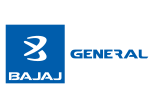How is an Endowment Policy Different from a Money Back Plan?
Table of Contents
India's traditional insurance and savings products, endowment and money-back plans, have been highly popular for a long time in India. Whole Life Insurance Corporation of India (LIC) endowment and money-back plans are the most popular among insurance customers, all other life insurers also offer these products. Despite the fact that endowment and money back plans have been around for a long time, many insurance purchasers are still unsure of their returns and appropriateness.
While Money-Back Plans and Endowment Plans may appear to be quite similar, they are actually extremely different. Some of the key distinctions between the two types of plans are addressed in the following paragraphs. For a full understanding of the differences between money-back programmes and endowment plans, read this article in its entirety.
Difference Between Endowment Plans Vs Money Back Plans
Here is how endowment plans and money-back plans vary fundamentally
1. Meaning
In the event of the policyholder's death or maturity, an Endowment Plan offers to pay a lump-sum payment.
As the policy term progresses, cash-back life insurance plans repay the money deposited in them.
2. Benefits In The Event Of Death
On death, both endowment and money back policies will pay the sum promised and any relevant bonuses.In an MB policy, regardless of the amount of instalments already paid out, the whole sum assured is paid. This increases the cost of MB plans.
3. Benefits Of Loans
In addition, because the guaranteed amount is paid in one lump payment only at maturity, an endowment insurance can be used as collateral for a loan.
A loan cannot be taken out against a money back plan since a percentage of the sum guaranteed is continually withdrawn over the policy's duration.
4. Benefits of Long-Term Commitment And Maturity
At maturity, assuming the policyholder survives the period, he/she receives the sum guaranteed and any relevant incentives. During the period of the plan, no payments are made.
During the life of the plan, the policyholder will receive a portion of the sum insured at preset intervals. Assured balance and any bonuses will be paid at maturity if the policyholder survives the period.
5. Risk And Premium
The risk associated with both strategies is modest, considering the reward of surviving and reaching maturity. However, for the same reasons, premiums for endowment and money-back plans are greater than those for conventional term insurance.
6. Tenure Of A Policy
10 to 35 years old in endowment plans, whereas it is 5 to 25 years old in Money back Plans.
Bottom Line
Both Money-Back Plans and Endowment Plans operate as both life insurance and investment vehicles. Before you acquire either one, you need to understand how they differ from one another and which one will help you meet your insurance requirements.
Must Read: Why Is The 20s The Best Time to Buy An Endowment Plan?
What Riders Should Be Added Under Endowment Plans?
Disclaimer: This article is issued in the general public interest and meant for general information purposes only. Readers are advised not to rely on the contents of the article as conclusive in nature and should research further or consult an expert in this regard.



























































